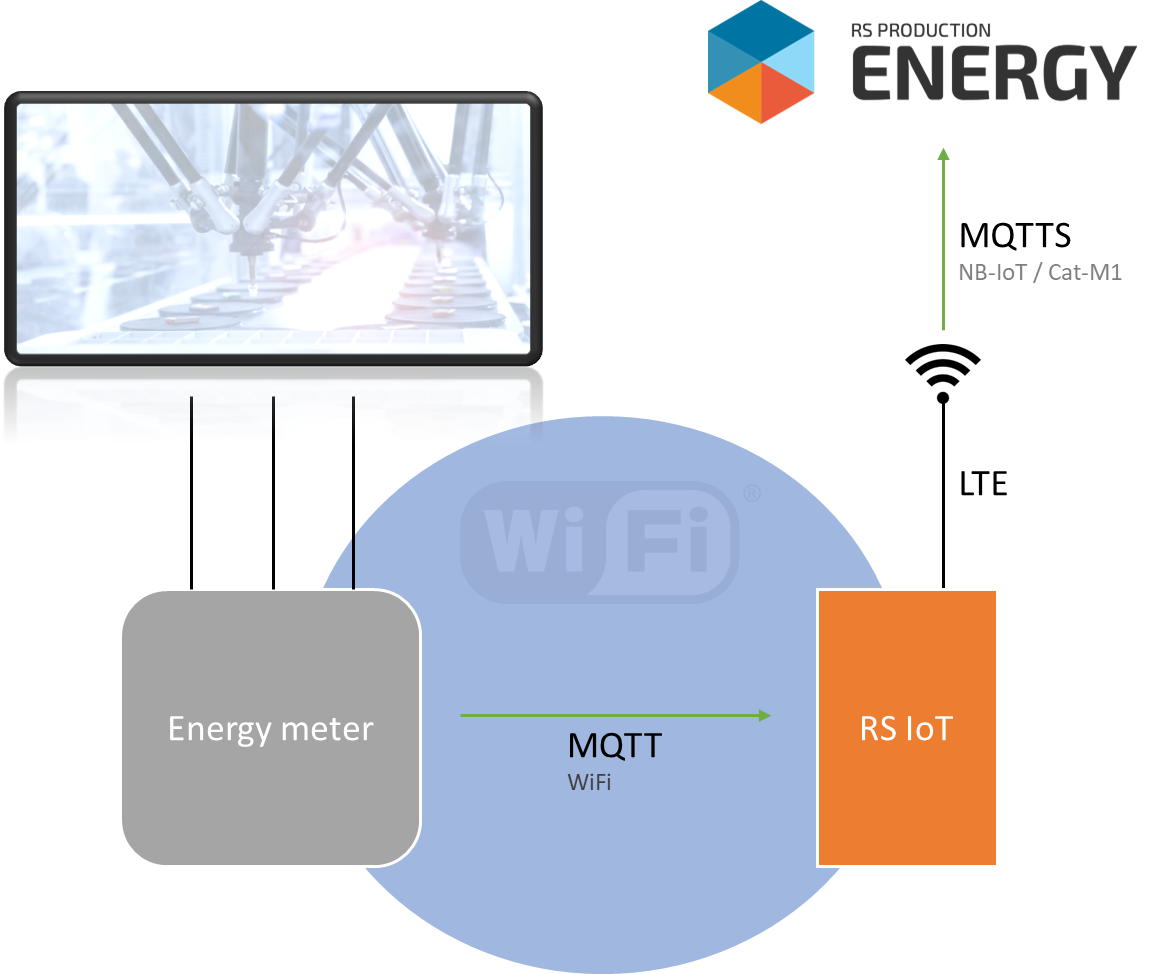Energy
This page gives you an understanding of how Energy works
This feature is included in RS Production Energy
It all starts in the electrical cabinet
The measure will in most cases start in the electrical cabinet for each machine as all the wiring is there. The energy meter and RS IoT box will be installed in the electrical cabinet and the measuring ampere clamps will be attached to the wiring.
.png?inst-v=b0a63340-441d-457d-b160-6ed0dd408c4b)
Communication
Inside the electrical cabinet the RS IoT box will set up a wireless access point that the energy meter connects to all the data from the energy meter is then tunneled over the internet using the RS IoT mobile data connection to the RS Energy in the cloud where the data is saved.

The RS IoT box sets up a local WiFi network and an MQTT broker.
The energy meter is connected to one, up to three phases of machine equipment (power source) in the factory.
The RS IoT box works as a wireless LAN for the energy meter.
The energy meter reads the power consumption and sends the data over the local wireless network using the MQTT protocol to the RS Iot MQTT broker.
The RS IoT box works as a communication bridge and sends the energy data to the cloud over the Internet using its mobile data connection.
Configuration in RS Energy
Each energy measure on machine equipment is equal to a power source in RS Energy. A measure point can be connected to one or more power sources, it is also possible to set how much the power source that contributes to the connected machine with a percentage value between 0 to 100%.

The measurements from the energy meters are sent to RS Energy over MQTT, so for each energy message that is sent, there will be an MQTT tag for that particular value in RS Energy where the value is collected.
RS Energy only stores the latest value of each MQTT tag, in order to store the data over time in a time series database it is possible to connect an MQTT tag with an IO-metric. The IO-metric saves all incoming data coming from the MQTT tag in a database and stamps every value with a time stamp.

An IO-metric is configured with what MQTT tag it should store, a name, in what database it should be stored, and in what physical unit the data is collected.
It is from the IO metrics that each power source gets its data, so each power source is always paired with an IO-Metric. That is the complete configuration in RS Energy to configure and connect the data from the energy meter to the measure point.

Once the connections from the energy meters' data are configured, the data can be summarized over time for each connected measure point. If the installation also has RS Production OEE installed the data can be joined and metrics like kWh per produced article can be calculated.
Capture energy data streams
Energy consumption data is captured automatically through the hardware provided.
Assign to one or more OEE measure points
The collected energy consumption can be assigned to one or more OEE measure points.
One OEE measure point can get energy consumption from one or more energy measure points.
Get Scope 1 and Scope 2 CO2 emissions
When you set the energy mix for different time windows, CO2 emissions will be assigned to the ongoing production order and article.
Get direct energy cost
When you set the cost per kWh for different time windows, energy costs will be assigned to the ongoing production order and article.